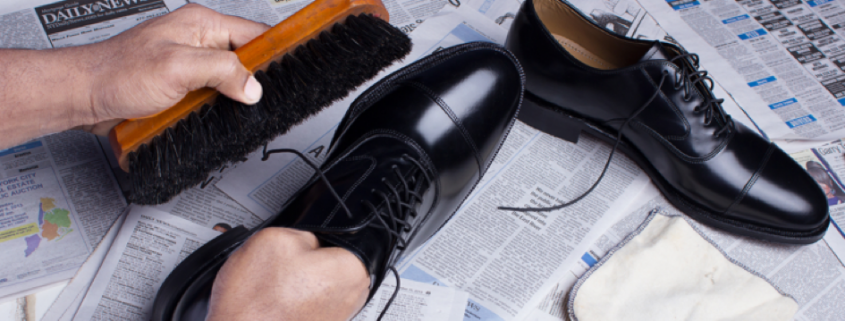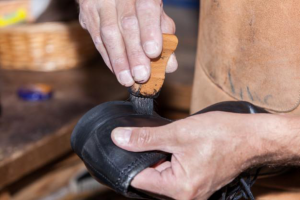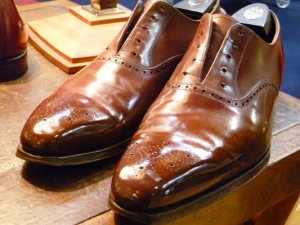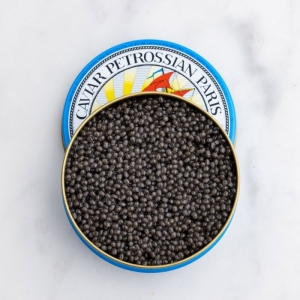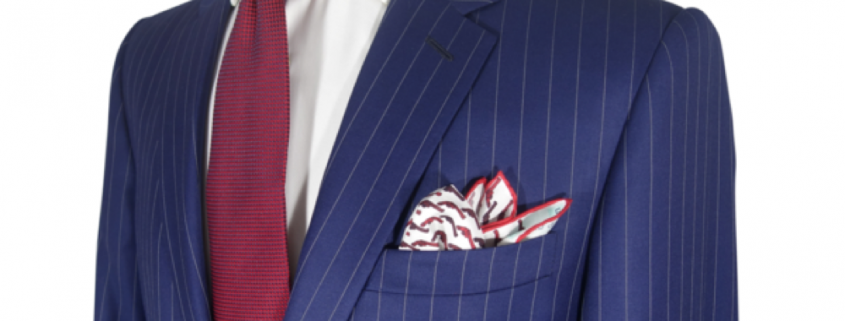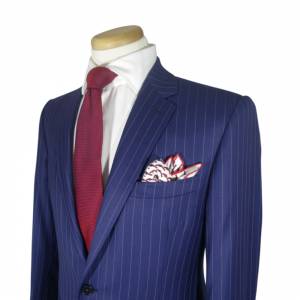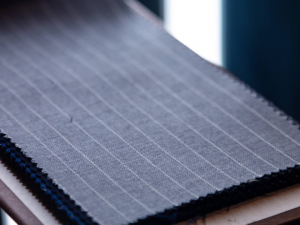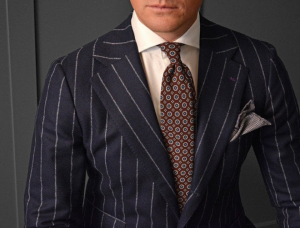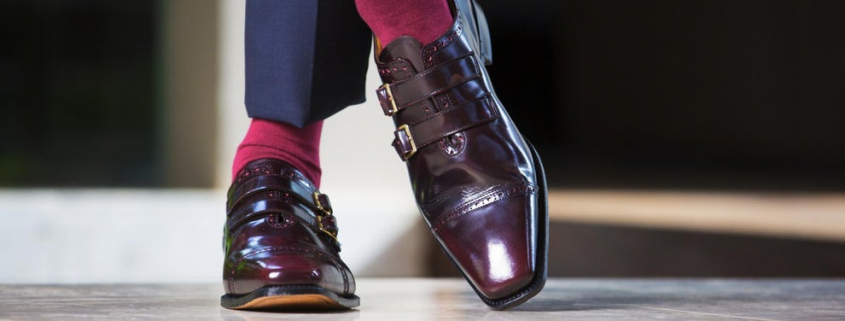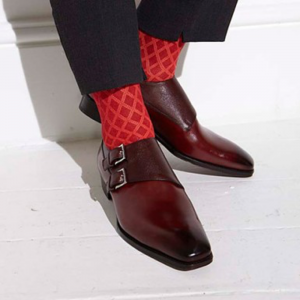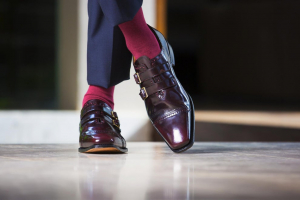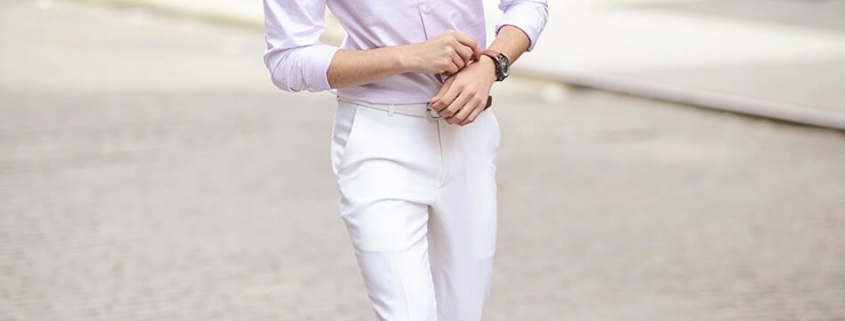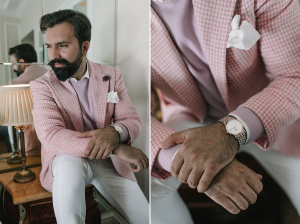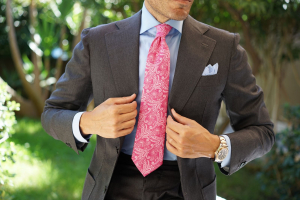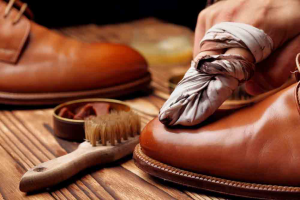
For many it is a necessary evil, but you can also make it a weekly or fortnightly ritual.
You will notice that after a few times it will be a real pleasure. A nicely polished and well maintained shoe also has to do with self-respect. Leather is an organic substance, just like human skin. If you let it dry out, it will wear faster and get ugly creases and cracks.
Therefore, use the best products you can afford for maintenance, i.e. of natural origin.
- Your good shoes deserve cedar wood shoe trees. Not only do they ensure that the shoe keeps its shape after wearing, because they dry 'in shape', but the wood also has a drying and deodorising effect. It will not only absorb sweat, but also acids and salt.
Always put the shoe trees in the shoes immediately after wearing them. - If you do not have shoe trees, you can stuff the shoe with newspaper before polishing. This keeps them in shape.
- Cover your work surface in advance with old newspaper. Polishing shoes can be a dirty job.
- Decide in advance whether you are going to use a brush or an old T-shirt. For polishing, the brush is best, for in between I personally prefer a t-shirt. This gives more feeling with the leather and the shoe.
- Use a lint-free soft cloth for the final finish.
- As mentioned before, use natural products as much as possible. Products based on beeswax are preferred. They are slightly more expensive but well worth the money. And they smell better too! Dried-out crumbly shoe cream is a no-no.
- Make sure you have all the products and the right colours ready before you start. I also recommend that you treat several pairs at a time.
This will get rid of them all at once and also save you time. - You can obtain extra gloss after all the steps by rubbing the leather with an old nylon stocking. Be careful not to do this on the creases or they may get a crackled effect from the extra shine afterwards. So only on the nose and contre-fort, the heel piece.
- When applying the coloured wax or cream, never forget to apply it to the sides of the soles. Pay special attention to the front, and don't forget the heel. The heel is a weak point for many men: driving a car makes the heels dull and grey due to the position of the foot, especially the right one, on the accelerator.
First of all: Clean up!
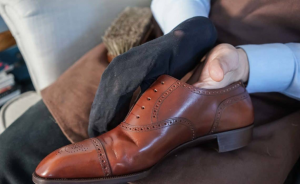
Don't forget to do the seams as well as the edge where the leather is attached to the sole. This can be done with a toothbrush.
Dust, mud, salt and other accumulated dirt have no chance of being fixed by the new polish and/or wax to be applied. Any remaining grains of sand could also scratch the surface when you apply new coats. This is also the time to remove the laces from the shoes. You protect them and avoid getting shoe polish on them, which will give you dirty hands when you tie the shoes afterwards.
Stubborn dirt can best be wiped off with a damp cloth, and in case there are already too many old wax layers on the surface, you can use an adapted 'cleanser'. This lotion, which is adapted to each individual, also ensures that the pores open up again. As a result, the new layer of cream will penetrate the leather more easily. Then let the shoes dry for at least 10 minutes.
After thorough cleaning, which in any case, together with wearing the shoes, has put a strain on them, we need to nourish the leather again. Gently rub the nourishing lotion or cream into the leather in not too large quantities. You can do this with a brush or, as I do, a soft cotton cloth such as an old t-shirt. Rub in small circles until completely absorbed. This will ensure that the leather gets a rejuvenating cure, as it were. The perfect good basis. Let this also soak in for about 10 minutes. Make sure that no residue is left on the leather.
Everything has to be spread nicely and evenly over the whole shoe.
Step 3: Brushing out
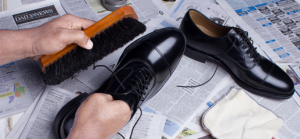
Step 4: Shoe polish and/or wax!
With a soft brush, or like me, a soft cloth, we now gently but thoroughly rub the coloured cream into the leather on the shoes.
Make sure that everything is applied evenly and that no thicker stripes are left behind. They are difficult to remove once they have dried.
A cream is easier to apply than a wax, which is harder by nature. The main advantage of a wax is the extra protection and shine afterwards. A combination of both is also possible. If necessary, use a cotton bud for places that are difficult to reach, such as the seams and where the sole is attached to the shoe. Here you can be quite generous.
Leave the cream or wax to penetrate for at least 15 minutes. This will allow it to set in and on the leather.
Take your horsehair brush and brush the entire shoe to the desired shine. If you want, you can rub in a little more and polish again. Tastes differ, of course. It is a fact that several thin layers are better and more beautiful than one thick layer.
The polishing itself is done with short, quick strokes. Because of the heat that is generated during this process, the products will be absorbed better into the leather. Now put the laces back in, and you have a pair of shoes worthy of a gentleman again!
Raphaël van den Poel, former fashion consultant of Scapa, Reinhard Frans and Atelier NA tailored suits,
writes our weekly blog on gentleman matters. He writes for MYX Magazine, a Flemish luxury lifestyle platform.
He also has his own blog which you can read here: http://belgiandandy.blogspot.com

